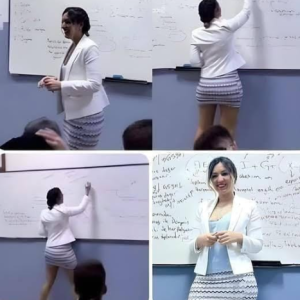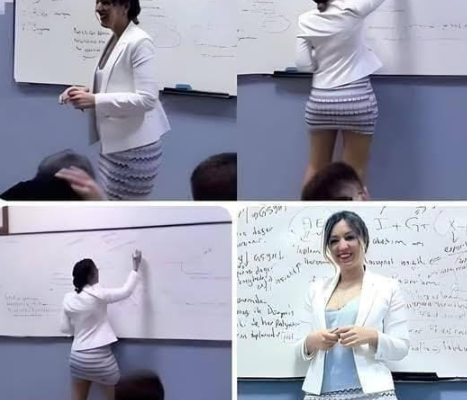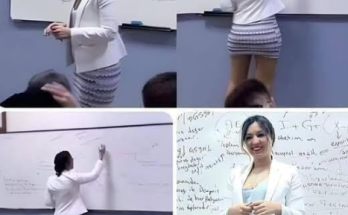The Forensic Doctor Who Didn’t Know the Truth
Dr. Adrian Cole had always believed that evidence never lied. In the sterile quiet of his laboratory, truth came in fragments — a strand of hair, a fingerprint, a blood sample. Facts comforted him. They were clean, unbending, and absolute.
Or so he thought.
That belief shattered the night he took on a case that would haunt him forever.
A Case That Should’ve Been Routine
It was late autumn when the file landed on his desk. Case #2476 — unidentified male, possible homicide. A few photos, a preliminary report, and a vague note from the detective: Family claims accident. Neighbors suspect otherwise.
Adrian barely looked up from his coffee. After fifteen years of examining corpses, nothing surprised him anymore. “Another day, another mystery,” he muttered.
He began his usual examination — external bruises, internal bleeding, standard toxicology. Everything pointed to an accidental fall. But something about the wounds felt inconsistent. The bruising pattern was irregular, and there was residue under the victim’s nails — a faint trace of metallic dust that didn’t fit the scene.
“Strange,” Adrian whispered. “He didn’t fall. He was pushed.”
The Unexpected Visitor
A week later, a woman arrived at the lab asking for the report. She introduced herself as Clara, the victim’s wife. She was calm — too calm — her dark eyes unwavering as she thanked him for his work.
But as she turned to leave, Adrian noticed a faint streak of metallic shimmer on her sleeve — the same kind of residue he’d found on the victim.
He froze.
“Mrs. Clarke,” he said slowly, “did your husband work with metals?”
She hesitated. “He… did some repairs around the house. Why?”
“Just curious,” Adrian replied, though his mind raced.
Something was off.
A Dangerous Decision
That night, against department protocol, Adrian decided to look deeper. He reanalyzed the evidence privately, cross-checking DNA traces under the victim’s fingernails. What he found chilled him — a partial match to Clara Clarke.
He knew he should have reported it immediately, but curiosity — or perhaps pride — got in the way. “Let me confirm it first,” he told himself. “If I’m wrong, it’ll ruin her life.”
He’d taken advantage of a gray area — testing evidence outside the system, without clearance. In doing so, he unknowingly set off a chain of events that would change everything.
The Twist in the Data
As he examined the results, something else appeared in the database — an anomaly. A second DNA profile, hidden beneath the first. It was faint, nearly undetectable, but unmistakably human.
He widened his search and gasped. The second profile was his own.
Somehow, his DNA had been found on the body.
Adrian’s heart pounded. How could that be? He hadn’t touched the victim before the autopsy. He followed every sterilization procedure, every precaution. Unless… someone had used his tools, his lab, his credentials.
He ran a quick access log check.
And there it was — an unauthorized entry into the lab at 2:13 a.m., just hours before the evidence was sealed.
Whoever entered had used his ID card.
The Trap
The next morning, Adrian confronted Detective Hughes, the lead investigator. “Someone tampered with my evidence,” he said, slamming the report on the table.
Hughes frowned. “You sure? That’s a serious accusation.”
“I’m positive,” Adrian replied. “Someone’s framing me — or covering something up.”
But Hughes’s expression didn’t change. “Funny thing, Doc. We were going to talk to you anyway. We just got new data — fingerprints on the victim’s wrist. Yours.”
Adrian’s world tilted. “That’s impossible!” he shouted. “I didn’t—”
But the detective cut him off. “Save it. We’ll need you to come downtown.”
He’d taken advantage of his authority, trusted too much in his access, and now the evidence had turned against him.
The Revelation
Days blurred into nights. Adrian sat in a holding cell, replaying every decision. Then, late one evening, a guard brought him an envelope. Inside was a note written in neat cursive:
You shouldn’t have looked deeper. Some truths aren’t meant to be found.
— C
Clara.
His stomach sank. She must have broken into the lab, using his access card while he slept in his office — something he’d done often after long shifts. She’d planted traces of his DNA, ensuring that if anyone discovered her guilt, suspicion would fall squarely on him.
She had taken advantage of his trust, his arrogance, and his belief that the system couldn’t fail.
Uncovering the Mastermind
But Clara had underestimated him. Inside the envelope was something else — a small flake of that same metallic residue. Adrian’s analytical mind clicked back into gear.
He pleaded with Hughes for one last chance to examine the evidence. Reluctantly, the detective allowed him supervised access.
Under the microscope, Adrian identified the metallic dust as silver alloy — commonly used in antique jewelry restoration. A quick database search linked Clara Clarke to a small business dealing in exactly that. But there was more — financial records showed massive insurance payments on her late husband’s life policy.
“She staged it,” Adrian said quietly. “She killed him, framed me, and thought she could walk away clean.”
Hughes’s jaw tightened. “And now we can prove it.”
Justice, Finally
When the police arrived at Clara’s workshop, she didn’t resist. The evidence was overwhelming — the metallic dust, the insurance fraud, and the falsified alibis.
Adrian was cleared of all charges. The lab reinstated him with an apology, but the experience had changed him forever.
He realized that even in a world built on science and logic, human deceit could still twist the truth. He’d once believed the evidence could never lie, but now he understood: evidence only tells the story of the hands that shape it.
A Lesson Etched in Silence
Months later, Adrian returned to work. The lab lights hummed softly, the same as before, but something in him had shifted. He now handled every file, every sample, with deeper care — not just for the science, but for the people behind it.
He no longer rushed through cases or ignored intuition. He knew that behind every mystery was a motive, and behind every motive, a heart capable of darkness or redemption.
When new interns asked him why he triple-checked every report, he smiled faintly and said,
“Because sometimes, the truth hides behind the truth.”
Epilogue
Clara Clarke was sentenced to twenty years in prison. Her final words during trial were chilling:
“You only found me because you thought like me.”
For Dr. Adrian Cole, that was both a victory and a warning.
He had taken advantage of his position once — thinking knowledge made him untouchable. Instead, it nearly destroyed him. Now, his hands shook slightly when he handled evidence, but not from fear. From respect.
Because the truth, he’d learned, was never as simple as it seemed.


